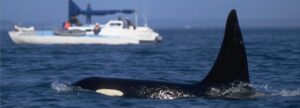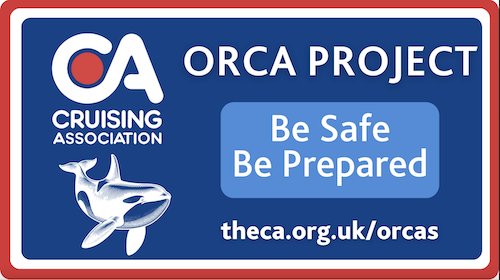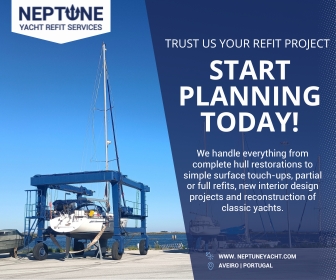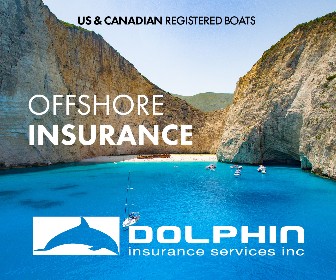Cruising Association: Be Safe and Be Prepared for Orca Season
As the cruising season arrives along the Atlantic coasts of France, Portugal, Spain and through the Straits of Gibraltar, the Cruising Association (CA) is urging sailors to be vigilant for potential Orca encounters.
Published 1 year ago
Be Safe and Be Prepared for Orca
The Cruising Association (CA) continues to share information on precautions and protocols to minimise the risk of encounters and provide guidance on actions to take if an encounter occurs. The CA’s dedicated Orca information and reporting portal provides a wide range of resources available in English, French, Portuguese, and Spanish.
Around 15 of a population of less than 50 Orcas have caused damage to numerous small vessels, at least four of which have sunk. The damage typically affects the rudders and crews can usually make their way to a safe port. To date no-one has reported being seriously injured.


Since June 2022, the CA has been instrumental in collecting and sharing reports and data on Orca interactions along this coastline. In early 2023 there was an escalation in interactions and there is no reason to indicate the situation will ease in 2024.
John Burbeck, CA Orca Project Team Lead, stresses the need for skippers and crews to familiarise themselves with protocols to mitigate potential encounters, saying, “By being prepared and prioritising safety and awareness, skippers can reduce the risk of meeting orca while navigating the affected waters.”
Past behaviour indicates Orca typically remain around the Strait of Gibraltar from April to early July as the bluefin tuna exit the Mediterranean, before locating west and north. However, their movements vary each year, making long-term predictions challenging.
Although most yachts avoid Orca encounters, understanding risks and knowing how to minimise the likelihood of an interaction is crucial.


Iberian Orca Migration Routes
It is important to understand the migration routes of orcas and skippers should plan passage routes to avoid known danger zones. Reviewing past interaction data available at www.theca.org.uk/orcas/reports and the monthly interaction maps completed by Grupo Trabajo Orca Atlantica (GTOA) can provide valuable insights to aid in planning.
Iberian Orca Locations
Skippers should be aware of the danger zones for Orca interactions. In 2023, this extended as far north as Brest in France and through the Bay of Biscay, Iberian Peninsula, Gibraltar Straits, north Moroccan coast and along Spain’s Mediterranean coastline up to Marbella.
During late April to October, as boats transit the affected waters, the likelihood of encountering Orcas increases. Skippers should stay informed of current Orca locations, hotspots and trends, which will aid in route planning and decision making.
GTOA publishes other information including traffic light maps indicating the probability of encountering Orca in different locations based on recent sightings and interactions. The following apps also provide up to date information:
- GT Orcas – download at Apple Store and Google Play
- Orcinus – download at Apple Store and Google Play
There is also useful information on the Orca attack Facebook groups, including the most active Orca Attack Reports.
Orca Safety Protocol and Checklist
Before embarking on a passage, skippers should review the CA Checklist and be familiar with noted Risk Reduction and Deterrent Measures. In the event of an orca encounter, it’s essential not to panic and follow the Safety Protocol recommended on the CA website.
Reporting Orca Sightings and Interactions
While the apps play a vital role in promptly reporting Orca sightings and interactions, skippers are urged to also submit reports to the CA reporting portal. This portal facilitates the detailed monitoring Orca of interactions and uneventful passages. Without these reports, critical information regarding changes in Orca behaviour or the efficacy of deterrent measures would be unavailable to sailors and scientists.
Skippers’ reports also feed through to the CA Interaction Comments Library which categorises skipper actions, such as using noise, sand or reversing and identifies different deterrent strategies.
The CA reporting portal also publishes Comparative Data, presenting statistics from interaction reports and uneventful passage reports side by side.
Cruising Association Disclaimer: Any advice has been prepared voluntarily by the Cruising Association, its members and others and they and it have tried to ensure that the contents are accurate. However, the Cruising Association, its employees, contributors and relevant members shall not be liable for any loss, damage or inconvenience of any kind howsoever arising in connection with the use of and/or reliance on such advice, save to the extent required by applicable law.
…………………………………
Related Reports:
How to Navigate “Orca Alley”
Over the first few months of 2024 in preparation for transit season, Noonsite has been publishing guidelines in collaboration with the CA as to how you can best-prepare for a passage around the Atlantic Iberian Peninsula and what you can do to help those following in your wake.
- Read Part 1: Passage Planning Tips (January 2024)
- Read part 2: FAQs Prior to Departure (February 2024)
- Part 3: What to do at Sea should you encounter orcas – is due to be published at the end of March 2024.
…………………………………
Related Links:
…………………………………
The opinions expressed in this article are the author’s own and do not reflect the view of Noonsite.com or World Cruising Club.
…………………………………
Find out all news, reports, links and comments posted on Noonsite, plus cruising information from around the world, by subscribing to our FREE monthly newsletter. Go to https://www.noonsite.com/newsletter/.
Related to following destinations: A Guarda, Albufeira, Algeciras, Alvor, Atlantic Coast (France), Atlantic Coast (Morocco), Atlantic Coast (Portugal), Aveiro, Aviles, Baleeira (Sagres), Barbate, Bilbao, Burela, Cadiz, Cascais, Ceuta, Chipiona, Corcubion, Ensenada de Santa Marta, Figueira da Foz, Finisterre, France, Gibraltar, Gibraltar Port, Gijon, Guetaria, Hondarribia, Huelva, Isla Canela, Isla Cristina, La Coruna, Lagos, Leixoes (nr Porto/Oporto), Lisbon, Mazagon, Melilla, Morocco, Mutriku, Nazare, North West Spain, Pasaia, Peniche, Portimao, Porto (Oporto), Portugal, Povoa de Varzim, Ria de Arousa, Ria de Camarinas, Ria De Cedeira, Ria de Muros, Ria de Pontevedra, Ria De Ribadeo, Ria de Vigo and Baiona, Ria De Viveiro, Ria Formosa (Faro & Olhao), River Guandiana - Ayamonte, River Guandiana - Sanlucar, Rota (Spain), San Sebastian, Santander, Sesimbra, Setubal, Sevilla, Sines, South Coast (Algarve), South West Coast (Spain), Spain, Spanish North Africa, Tarifa, Tavira, Troia, Viana do Castelo, Vila Real de Santo Antonio, Vilamoura
Related to the following Cruising Resources: Atlantic Ocean East, Environment, General, Orcas and Yachts, Routing






